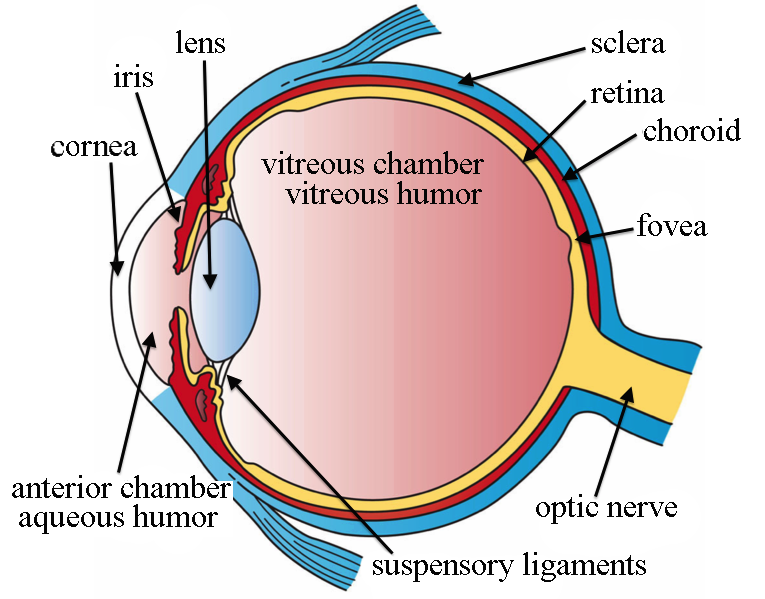Post Views: 833

The eye is a complex organ that allows us to see. It has several parts, including:
- Cornea: A clear, dome-shaped tissue at the front of the eye that helps to focus light.
- Iris: The colored part of the eye that controls the size of the pupil, which is the opening that allows light into the eye.
- Pupil: The black center of the eye that allows light to enter.
- Lens: A clear, flexible structure behind the iris that helps to focus light onto the retina.
- Retina: The light-sensitive tissue at the back of the eye that contains millions of photoreceptor cells that convert light into electrical signals that are sent to the brain.
- Optic nerve: A bundle of nerve fibers that carries electrical signals from the retina to the brain.
- Sclera: The white outer layer of the eye that helps to protect and maintain the shape of the eye.
- Conjunctiva: A thin, transparent membrane that covers the front of the eye and lines the inside of the eyelids.
- Eyelids and eyelashes: Structures that help to protect the eye from foreign objects and excessive light, and keep the eye moist by spreading tears over the surface.
Dr. Sarbjit Singh
